TIG welding zinc is a complex process and requires specialized tools and techniques. Many even consider it impossible to weld.
To weld it successfully, you need to understand the properties of zinc, which will eventually help you choose the right welding rod, adjust the settings properly, and maintain a clean working environment.
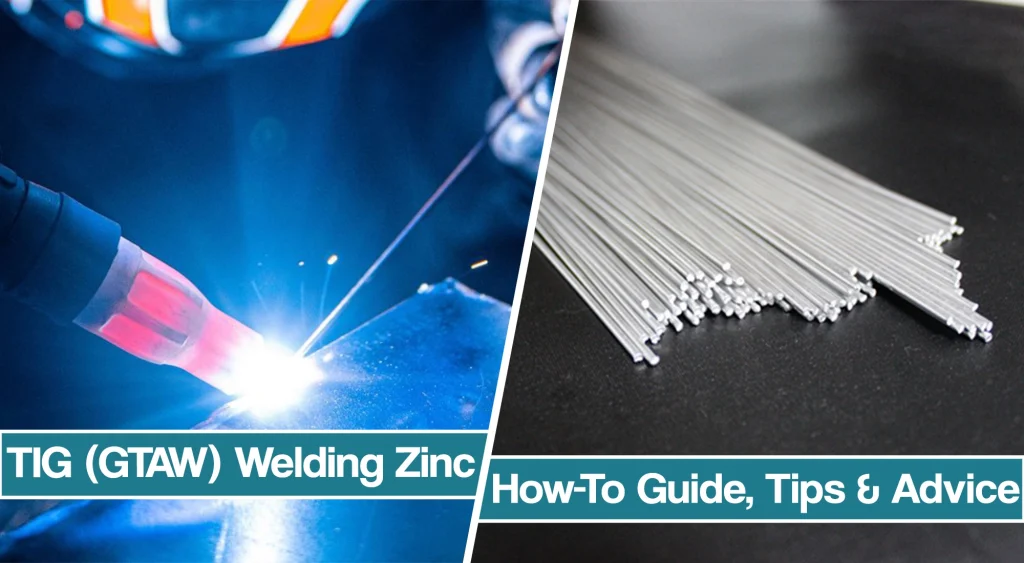
Through our comprehensive guide, we’ll give you tips and advice on how to TIG weld zinc with confidence. The final goal is to achieve strong welds and stay safe while doing it.
What Is Zinc And Why is It Used?
Zinc is a bluish-white metal that is malleable and ductile. Zinc has a wide range of industrial uses, including galvanizing, alloying, and die-casting. Its excellent corrosion resistance and wear resistance make it ideal for outdoor applications such as automotive parts, roofing materials, and outdoor furniture.
In addition to its corrosion-resistant properties, zinc is also ductile and malleable. This makes it easy to shape into different forms—while still being strong enough for structural applications.
These qualities make zinc suitable for use in many industrial manufacturing processes such as casting, forging, rolling, extrusion, welding, machining, and stamping. Therefore, you often see it as zinc-plated steel, zinc plating, or zinc coating in many different applications.
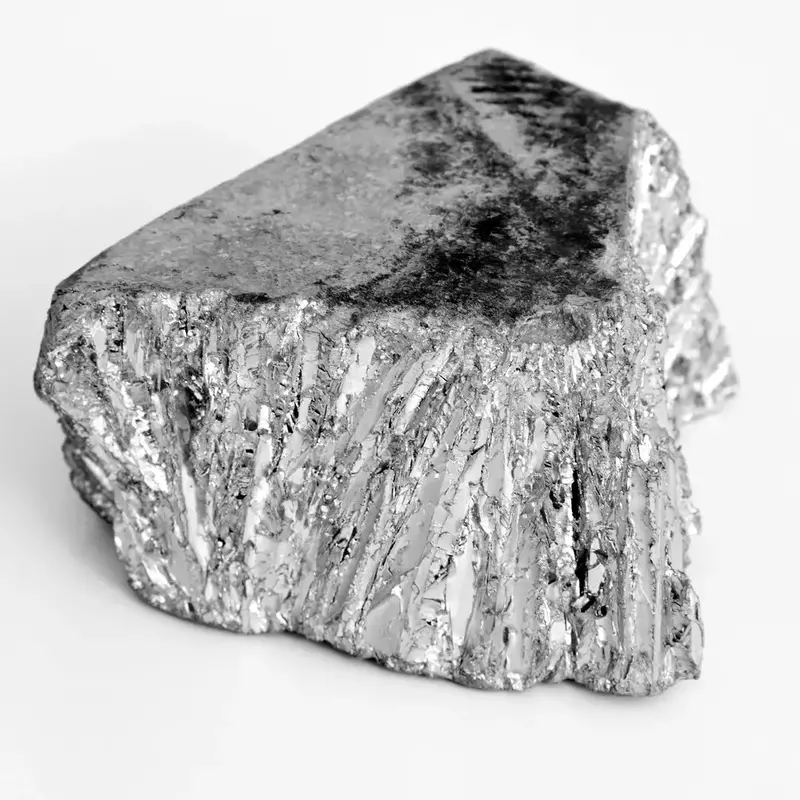
Can You Weld Zinc, And Is It Safe?
Zinc is a difficult metal to weld because of its low melting point and high reactivity. Zinc melts at 419°C (786°F), which is much lower than the melting points of other metals, such as steel or aluminum, which melt at 1510°C (2750°F) and 660°C (1220°F) respectively. This low melting point makes it difficult to maintain a stable arc while welding, and once the zinc starts boiling, toxic fumes develop, which makes welding galvanized steel or zinc highly risky.
Zinc fumes are a by-product of welding zinc and other metals containing zinc. They form when the molten zinc is heated to the point of vaporization, at which point the zinc molecules become airborne and can be inhaled.
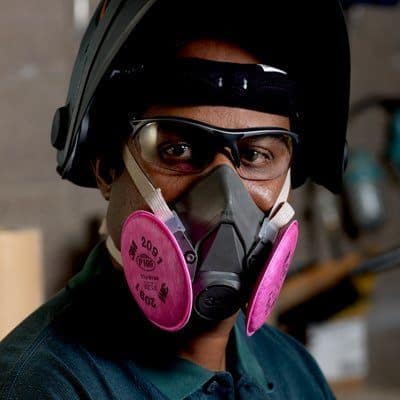
Exposure to these fumes can cause flu-like symptoms, irritation of the eyes, nose, throat, and lungs, as well as nausea, headaches, and dizziness in some cases. Long-term exposure may also cause more serious conditions and industrial disease such as metal fume fever or pneumonitis.
Zinc is also highly reactive, meaning it can corrode easily when exposed to air and moisture. This increases the risk of contamination during welding, making it harder to achieve desired results. Additionally, zinc is susceptible to hydrogen embrittlement, which is a process in which hydrogen molecules are absorbed into metal lattices and cause them to become brittle and crack under stress.
That’s why industries rarely use pure zinc, or some welders consider welding zinc-plated steel impossible. However, with time and patience, you can successfully weld zinc-plated steel with TIG welding, MIG welding, Stick welding, or Resistance welding.
What is the best Way & How To TIG Weld Zinc?
Zinc can be welded using both arc welding and gas tungsten arc welding (TIG) processes, but TIG welding is preferred due to heat control.
When TIG welding zinc, special precautions must be taken to avoid zinc oxide fumes which are hazardous to human health. Weld preparation, including proper cleaning of the welding surface and wearing protective gear, is crucial.
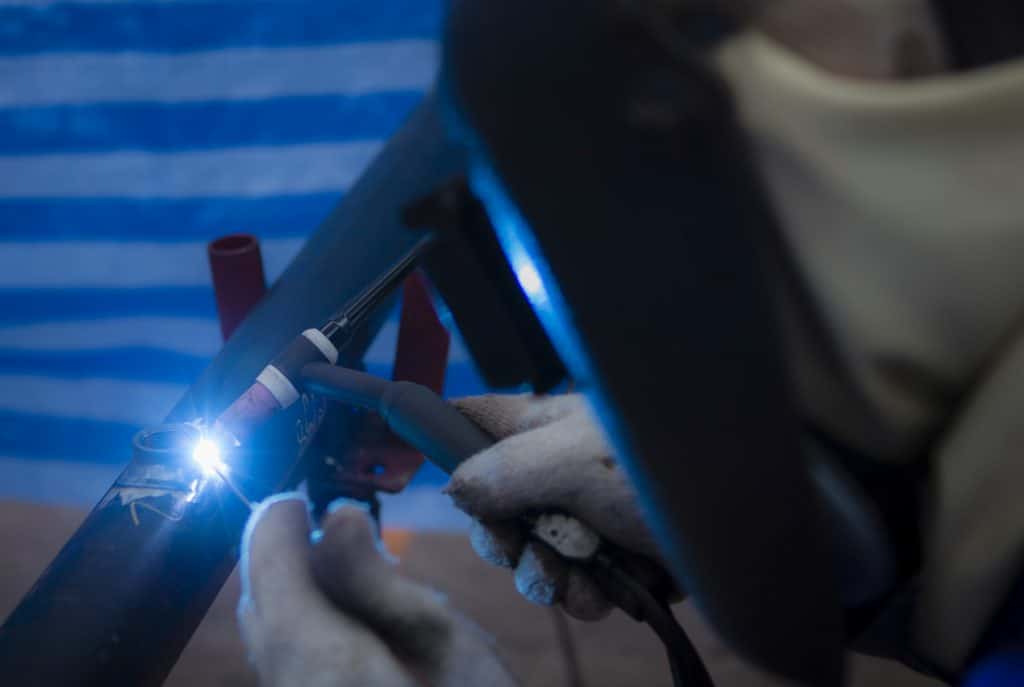
The most common filler material used for welding zinc is an aluminum-zinc alloy containing 2-2.5% aluminum, 0.2-0.7% magnesium, and small amounts of other elements such as copper or manganese. This filler metal provides excellent corrosion resistance and allows for good wetting action between the zinc base metal and the filler material during the welding process.
When TIG welding zinc alloys, it is important to use clean inert gas for shielding purposes to prevent oxidation of the weld pool. In addition, care must be taken when selecting heat input levels as excessive heat can cause excessive porosity in the welds due to the vaporization of alloying elements from the base metal or filler material.
TIG Welder For Zinc Welding – AC/DC TIG Capability
The suitable TIG welder for TIG welding zinc should have an AC/DC TIG capability. A range of features is recommended for welding zinc, including a high-frequency start that eliminates the need for dangerous high-voltage arcing when starting the weld, advanced inverter technology which provides a smoother, more consistent arc, and an adjustable AC balance control.
TIG welder should also have an adjustable amperage range of 20-200 amps, allowing welding a wide range of zinc thicknesses. The foot pedal will help adjust the amperage while welding, ensuring a perfect weld every time.
Due to low melting point and high reactivity, you will have to use features that limit the heat. Therefore to successfully TIG weld zinc, set up the pulse. The good practice is even to switch to AC current and adjust the balance for better cleaning action. The final goal is to get enough heat to melt and fuse the zinc, but not too high to cause too many fumes.
What Filler Rod Should You Use For TIG Welding Zinc?
The most common filler rod used for zinc welding is an aluminum-zinc alloy. This filler rod contains 2-2.5% aluminum and 0.2-0.7% magnesium. The alternative is EZ33 alloy, which is a zinc-based, low-temperature filler that can be used for TIG welding. This alloy is composed of 3.3% aluminum, 1.0% magnesium, and 95.7% zinc. The base of both fillers is rich in zinc, which helps reach the structural properties of base metal. The addition of aluminum and magnesium to the zinc alloy increases its strength and makes it better suited to welding applications.
Zinc filler rods are suitable for a variety of applications, including structural and automotive components and zinc-coated steel. The welds also possess good crack resistance, excellent corrosion resistance, and excellent fatigue resistance.
What Is The Best Tungsten For TIG Welding Zinc?
The best tungsten for TIG welding zinc is pure tungsten or thoriated tungsten. Pure tungsten is preferred on the AC current, it is likely to contaminate the weld and has good electrical conductivity. 2% thoriated tungsten is also a good choice for TIG welding zinc. Thoriated tungsten has a higher melting point than pure tungsten and is more resistant to contamination.
When welding on AC, pure tungsten will form balled tip which is required for it to work properly and transfer the arc. Meanwhile, if you work with thoriated tungsten, you will have to grind the tip to get the best arc results. Anyways, both work great on zinc, a layer of zinc on metal or steel coated by zinc spray.
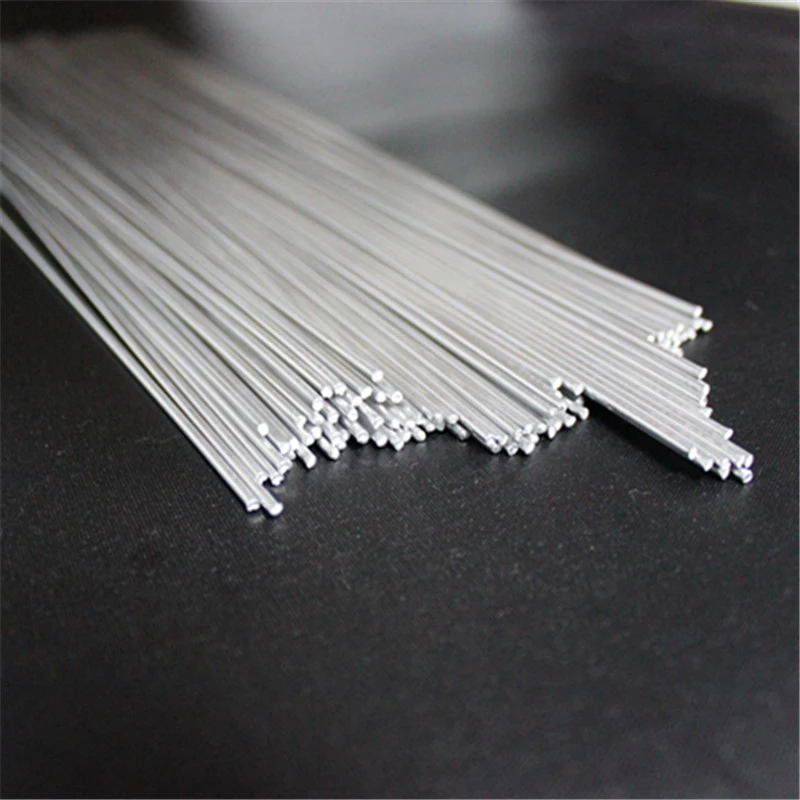
What Is The Shielding Gas Choice For Zinc Welding?
For TIG welding zinc, the most suitable shielding gas is a 100% argon mixture, as this will help to reduce oxidation and protect the weld from the atmosphere. Argon is the most commonly used gas for TIG welding zinc because it is an inert gas. Inert gases, such as argon, do not react with other compounds, including the weld metal, atmosphere, and tungsten, making them ideal for shielding metals such as zinc from the atmosphere.
Argon also has a high thermal conductivity, which helps to transfer heat efficiently and reduce the warping of the weld. It also has a high density, which helps to prevent turbulence of the gas flow, ensuring a stable and consistent weld. You can add helium to the mixture when welding thicker pieces, but keep in mind that helium increases penetration and causes higher heat. You want to avoid excessive heat to reduce zinc fume exposure.
Welding Technique
TIG welding zinc is a process that requires careful attention to detail and precise control of the welding parameters, most importantly the heat. In order to achieve a successful weld, you must use the correct travel angle, welding speed, and torch manipulation.
The travel angle for TIG welding zinc should be set at an angle between 10°-25° in relation to the surface of the workpiece. This allows the electric arc to penetrate deeply into the base material without causing too much heat buildup.
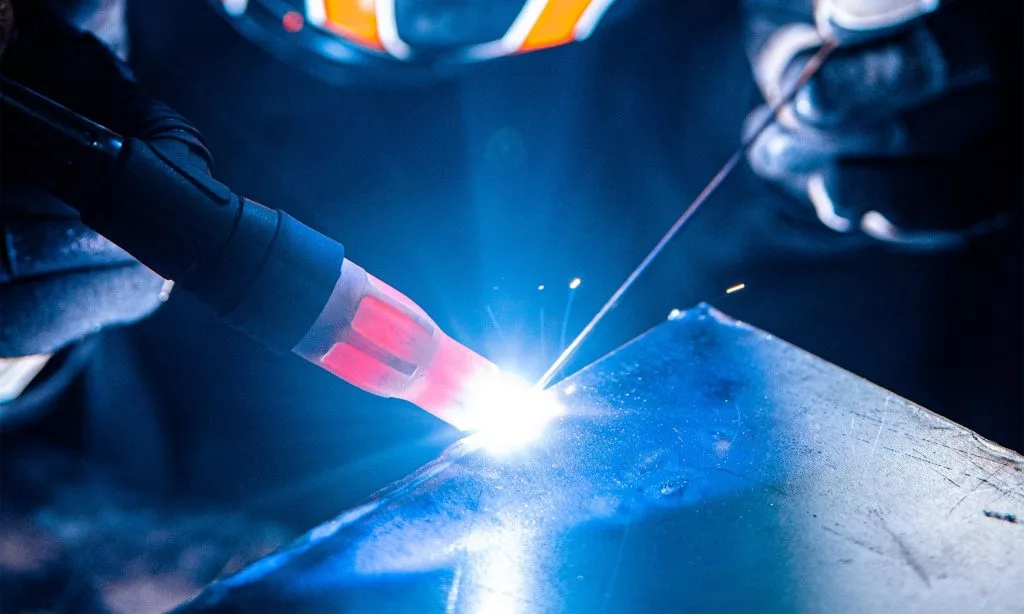
The speed of the weld should be slow enough so that there is enough time for the molten puddle to cool and form a strong bond with the base material. The recommended speed is a minimum of 3/8” per minute.
You should manipulate the torch in an oscillating motion while maintaining a consistent distance from the workpiece. This will help to prevent excessive heat buildup and will ensure that a consistent bead profile is created along the length of the weld area. Additionally, it is important to use a moderate arc length (1/8” – 1/4”) when TIG welding zinc in order to reduce spatter and minimize distortion on the workpiece.
Post Weld Cleaning
After completing welding on zinc, you should allow the welded area to cool down completely before beginning any further steps. Once the area has cooled, you should remove any slag that has formed on top of the weld. Slag can be removed using a chipping hammer or wire brush, depending on how much slag has formed.
Perform a visual inspection of the welded area to make sure that no cracks have occurred and that there are no weak points in the welded joint. It is also necessary to inspect for structural integrity and overall strength of the welded joint. Holes and cracks are never a good sign, so you might have to rework them.
Tips For Successful TIG Welding Zinc
- Wear protective gear when welding zinc-plated steel or any zinc form. You can avoid zinc fumes by wearing a respirator and welding mask, and the risk of burns by wearing TIG welding gloves.
- Choose the right filler metal: When welding zinc, you should use a zinc-based filler metal
- Use a low amperage: Start at a low amperage (around 15 amps) and slowly increase until a bead is formed. Too high of amperage can cause excessive spatter and warping of the metal parts.
- Utilize a purge gas: Using a purge gas when welding zinc and plating steel helps to minimize oxidation and keep the weld clean. Argon is often used for this purpose when welding zinc.
- Clean the material: Be sure to clean the material before welding to remove any dirt or grease that can contaminate the weld or weaken the joint. A wire brush or sandpaper can be helpful.
- Shield with appropriate coverings: Shielding gases are important for protecting the weld area from oxygen and other atmospheric contaminants, so it’s important to use proper shielding techniques when welding zinc, such as using appropriate coverings like tarpaulins or ceramic blankets to block off the area from drafts and other sources of air contamination.
- Apply adequate heat: Adequate heat must be applied during welding in order to ensure that all components are properly melted together and that there is enough fusion along the edges of the joint. This will help ensure a strong bond between the two pieces of zinc being welded together.
Conclusion
To summarize, the answer to the question of How to TIG weld zinc. Challenging but rewarding process when done correctly. It requires the use of specialized tools, materials, and techniques to ensure successful welds with the desired strength. You shouldn’t disregard the risk of vaporized zinc, which presents health hazards when welding without a respirator or with sufficient ventilation. Zinc coat makes welding challenging but not impossible.
The correct combination of shielding gas, filler metal, safety equipment, and welding current must be used to prevent porosity or cracking in the weld joint. With the proper preparation and knowledge we provided in this article, any welder can successfully create strong joints with TIG welding zinc.
Resources:
- https://www.lincolnelectric.com/assets/US/EN/literature/mc1595.pdf
- https://forum.millerwelds.com/forum/welding-discussions/12612-welding-die-cast-zinc-alloys
- https://metalfinishingsltd.co.uk/articles/welding-zinc-coatings/
- https://www.adamsgas.co.uk/2020/03/08/how-to-weld-zinc/
- https://www.practicalmachinist.com/forum/threads/welding-zinc-sheet-metal-s.163582/





